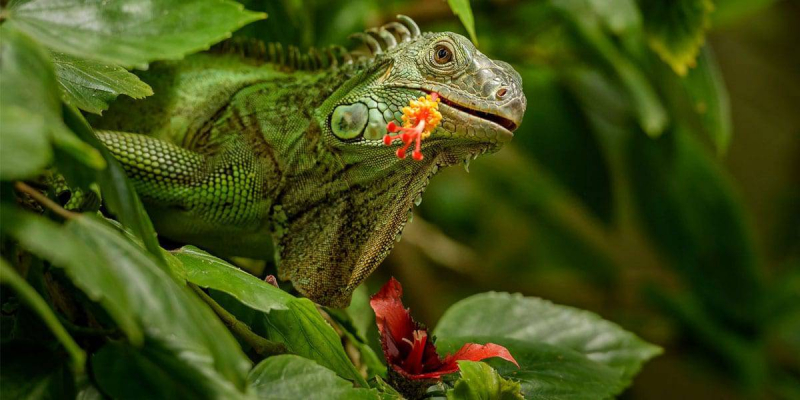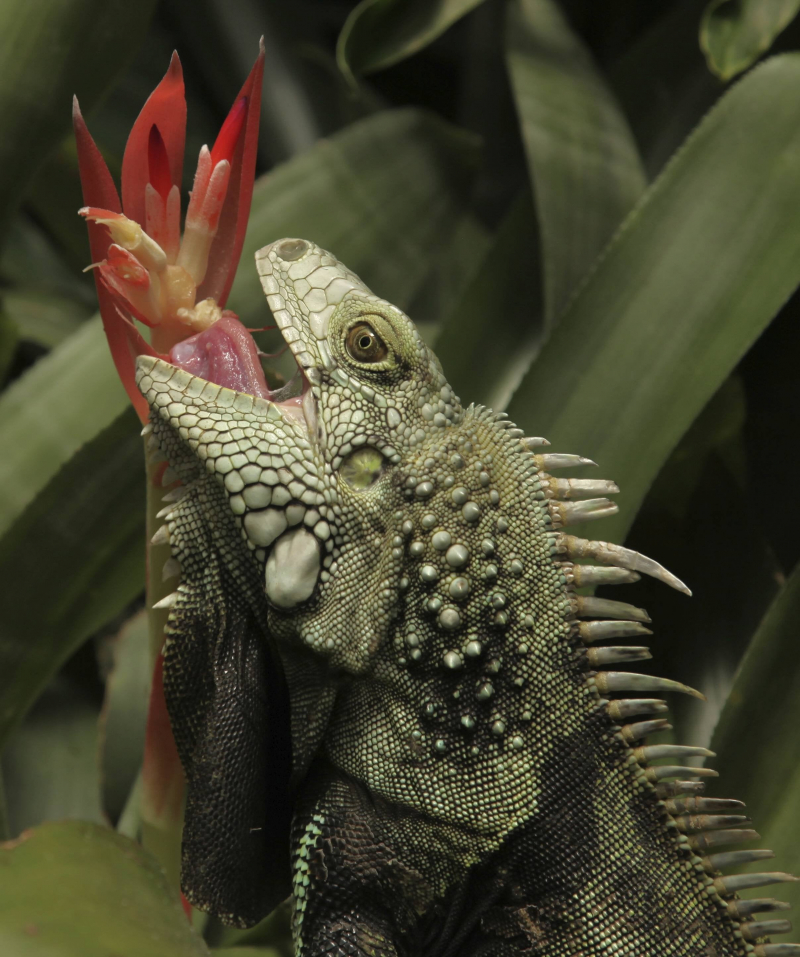They are herbivores
Even though they are omnivores, the majority of iguanas in the wild choose to consume mostly plants. The leaves, buds, blossoms, and fruits of fig trees are among their favorite meals. The baby reptile consumes egg yolk for the first two weeks after hatching. Young iguanas often consume more insects than adults because they require a high level of protein for proper development. They may occasionally consume insects or tiny amounts of carrion, however, they prefer green leafy vegetation or ripe fruits. Iguanas eat a variety of things depending on their environments, such as fruits, green leaves, and saltwater larvae. As folivores, desert iguanas prefer to eat leaves, however, they will also consume flowers and buds. While some marine iguanas dive into the ocean to gather algae from plants.
When iguanas are young, they are omnivores. They mostly eat insects and snails. Some animals have bacteria in their gastrointestinal tracts that enable them to ferment the plant matter they consume. Young iguanas eat spiders and insects in their early years to hasten their growth. But as iguanas become older, their diets become nearly purely herbivorous. The majority of iguana species consume young leaves, fruits, and flowers. They can shred leaves thanks to their strong fangs. These animals bite their meal into pieces that are tiny enough to be swallowed with little to no chewing by moving the food with their tongues. Older iguanas have a diet strong in calcium and low in phosphorus. Iguanas' appetites are suppressed by cold weather conditions. Normal dining temperatures range from 77 to 95 degrees Fahrenheit. The digesting process requires soaking. When these lizards are preparing to deposit their eggs and when they are about to lose their skin, they may cease eating. As they age, green iguanas go to higher elevations and reside in the tree canopy as well.











